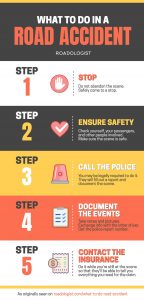
Should the Manuals be Saved?

It’s a campaign begun years ago, as automatic transmissions began to become standard equipment on new cars, replacing, um, standard transmissions. “Save the Manuals” is the rallying cry.
But I don’t buy into it.
My first car was a stick, and as I write, my latest manual-transmission vehicle sits in the garage below my office, so I’m no automatic-only pansy. But with more than 60, yes, 60, new car models currently available with manual transmissions in the U.S. market, the bleating from the “Save the Manuals” crowd is more irritating than inspiring.
When an online review of a new automatic-only car gets posted, in the comments field will appear the inevitable “no manual, no sale” remark. Yeah, right. As if you were going to buy a Camry. And if you were going to buy a Camry until you realized it is automatic only, you can instead buy an Accord, every bit as good a car if not better, and still available in row-your-own guise. Or stay with Toyota and drop down to a Corolla, also still available with a stick.
Stop by the Chevy store and you can find a manual transmission in cars from the top-of-the-heap Corvette down to the lowly Spark, with the Camaro, the Cruise, and the Sonic each also offering a clutch pedal.
Audi, BMW, Cadillac, Chevy, Dodge, Fiat, Ford, Honda, Hyundai, Jaguar, Jeep, Kia, Mazda, Mini, Mitsubishi, Nissan, Porsche, Subaru and Volkswagen all offer at least one manual-transmission vehicle and most offer more than one. Even a Ram Diesel can be had with a manly stick shift, as can a few colossally expensive exotics, but most of the cars still available with a manual transmission are cars that driving enthusiasts can embrace and afford.
I’ll agree that even with over 60 manual-transmission choices still available, it is clear that manual transmissions are not as popular as they once were. Time was when every car and truck had a standard transmission as standard equipment, and the automatic was an extra-cost option. But today there is simply no demand for manual-transmissions in minivan or SUV mommymobiles, and today many drivers have never driven a stick and don’t know how. The EPA certification process for engine-and-transmission combinations makes it not feasible for automakers to offer manuals across the board, and so they certify and sell what sells.
 Virtually all of the alleged advantages of a manual transmission have been rendered obsolete or moot, too. More fuel-efficient? Not these days, where eight- and nine-speed automatics deliver optimal gas mileage. Lower cost? It’s true that the cars still offering sticks continue to sticker less than the same car with the optional automatic, but you’ll pay for it at the other end with dramatic depreciation losses vs the automatic-equipped version. More driver involvement? How involved do you want to be when modern traffic is more stop than go?
Virtually all of the alleged advantages of a manual transmission have been rendered obsolete or moot, too. More fuel-efficient? Not these days, where eight- and nine-speed automatics deliver optimal gas mileage. Lower cost? It’s true that the cars still offering sticks continue to sticker less than the same car with the optional automatic, but you’ll pay for it at the other end with dramatic depreciation losses vs the automatic-equipped version. More driver involvement? How involved do you want to be when modern traffic is more stop than go?
I’d wager that of those who decry the decline of manual-transmission availability, most own at least one automatic-transmission car, either for a family member or for themselves, proving that the choice of the transmission is secondary to the choice of the car. If you want to “Save the Manuals” then stop bellyaching and put your money where your mouth is and buy one of the 60+ remaining choices.
 A road accident can be one of the most stressful events in a driver’s life.
A road accident can be one of the most stressful events in a driver’s life.Knowing what to do after a road accident is a fundamental piece of a driver’s education. But not many people actually know the steps to follow after a car accident. Until it’s too late.
This beautiful infographic by Roadologist summarizes the 5 critical steps you should take to correctly manage the aftermath of a road accident. Keep these steps in mind should you ever find yourself in one.

